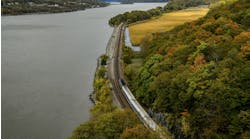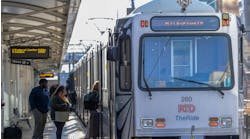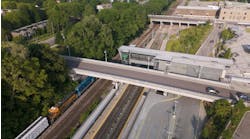Dubuque’s Complete Streets Project Included in New National Survey
Communities that used a Complete Streets approach to transportation reduced the number of automobile collisions and injuries, and increased the number of people biking, walking, and taking transit. These projects were inexpensive yet achieved core transportation goals, and were also related to increased employment, higher property values, increased net new businesses, and increased investment from the private sector according to new research released today by Smart Growth America’s National Complete Streets Coalition.
Safer Streets, Stronger Economies analyzes data from 37 Complete Streets projects across the country, and explores the outcomes communities got for their investment. Relying on information collected by local departments of transportation and economic development, the new findings show just how good an investment Complete Streets projects can be.
Dubuque’s Complete Streets Project was one of the 37 projects included in the research. Completed in 2012, the project involved the design of streets in Dubuque’s Historic Millwork District to facilitate use by a broad range of users, including drivers, public transportation vehicles and riders, pedestrians, bicyclists, older people, children, and people with disabilities. The design included new curbs and bumpouts for improved pedestrian crossings, new energy-efficient street lights, and locally designed and manufactured benches, bike racks, and receptacles.
Dubuque’s $7.7 million Complete Streets Project was funded in part through a $5.6 million U.S. Department of Transportation TIGER (Transportation Investment Generating Economic Recovery) Grant. A $150,000 Iowa Great Places grant from the Iowa Department of Cultural Affairs helped fund the streetscape portion of the project.
Attention to historic elements was very important to Dubuque’s Complete Streets design team and the community. Old railroad tracks were kept in the pavement to pay respect to the railroad access to the Millwork District, and a special reverse mix in the concrete was used to give sidewalks an aged appearance. The project also incorporated many sustainability elements, including LED lighting for improved visibility and reduced costs, recycled concrete as base stone for the streets, recycled brick for accents along the street, and permeable pavements to reduce storm water and recharge the Mississippi River aquifer.
"People have commented how they really like the improved sidewalk and multimodal vehicle access to the area,” said Jon Dienst, civil engineer for the city of Dubuque. “In essence, the project made the whole district a much better place to walk, drive, take transit or bike."
“The before and after data from transportation departments show that Complete Streets projects can be a tremendously good transportation investment,” said Geoff Anderson, president and CEO of Smart Growth America. “Some communities have gotten greater throughput, huge improvements in safety, more people biking and walking, and economic results to boot. Given their inexpensive price tags Complete Streets have to be considered by DOTs for their transportation merits alone, not to mention their health, community, and economic outcomes.”



